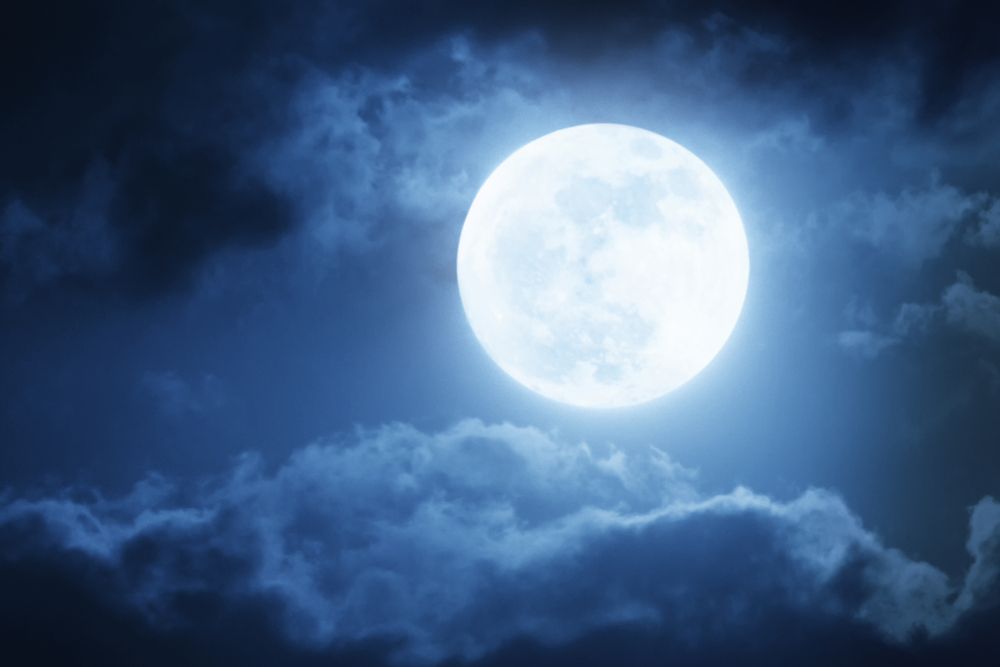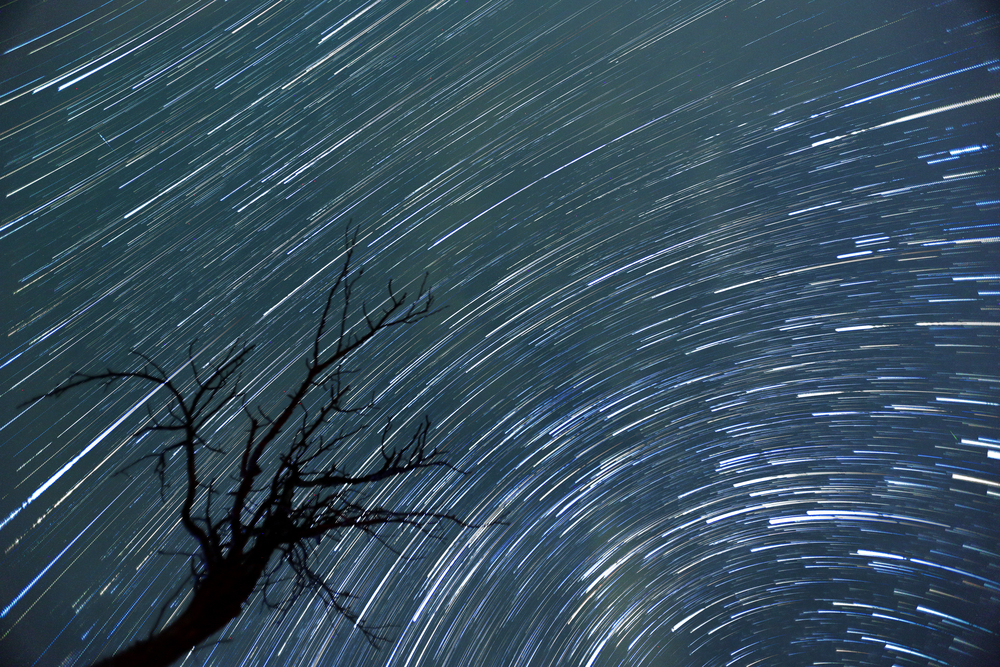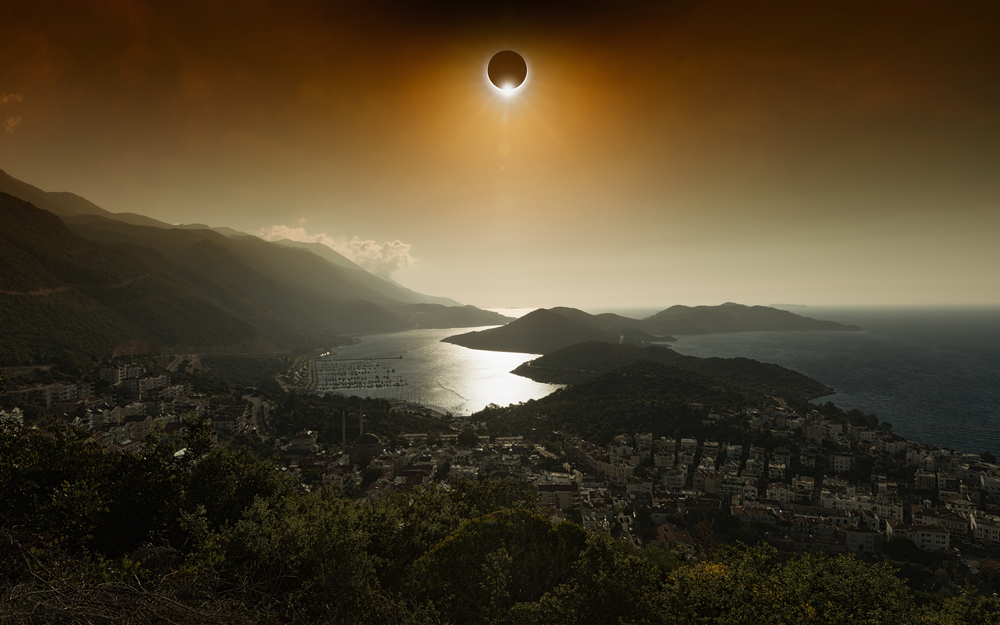From the Blue Moon to the Cosmic Kiss: The Most Anticipated Astronomical Phenomena of 2020
2020 promises unforgettable spectacles for professional astronomers and simply amateurs to gaze at the night sky all over the world, writes with the BBC.

Фото: Depositphotos
In fact, in 12 months we will see 13 full moons, several supermoons, one blue moon, a kiss of planets, spectacular starfalls and a total solar eclipse. But first things first.
1. Four super moons and one blue
A supermoon is an astronomical phenomenon when the full moon coincides with perigee, the moment when the Moon and Earth are closest. At this time, the Moon looks much larger and brighter than usual.
However, supermoon is a very vague term, and not all astronomers agree with this definition. Hence the difference in the count: for optimists in 2020 there will be four supermoons at once, and for pessimists - only two, on March 9 and April 7.
The March full moon is called the Full Worm Moon because there is usually a thaw at this time and earthworms appear on the surface. And the April full moon is also called the Pink Moon, since the American Indians associated it with the appearance of the first spring flowers - wild phlox.
Two controversial super moons will occur on February 9 and May 7; according to some scholars, these days the moon will not be big enough for a super moon. This is the Snow Full Moon, because heavy snowfalls and the Flower Full Moon usually occur during this time.
And the first full moon this year will happen on January 10 and will be called the Wolf, because at this time the wolves have a mating season and they howl especially often.
But that is not all. On October 31, a “blue moon” awaits us, and the point here is not at all in color, but in the fact that this is traditionally called the third full moon in that astronomical season, which has four full moons instead of the usual three.
However, today the “blue moon” is also called the second full moon that falls within the same calendar month. It's not easy for these astronomers.
2. "Star Rain" Perseids

Фото: Depositphotos
Few people are surprised by meteor showers, but the Perseid “Star Shower” is one of the most spectacular phenomena of the year. It occurs every night from mid-July to mid-August, and no special equipment is required for observation: with up to 80 meteors rushing through the sky per hour, it is difficult not to notice it in good weather.
It looks like meteors are shooting out from the northern constellation Perseus, but in fact the reason for this phenomenon is that the Earth is passing through the remnants of the tail of Comet Swift-Tuttle.
This year, the peak of the star shower, sometimes called "Tears of St. Lorenzo", will occur on the night of August 12th.
3. Manhattanhenge
New Yorkers are familiar with this phenomenon.
On the subject: 10 best photos of New York on Instagram
Four times a year, in December, January, May and July, the rising or setting sun shines through the streets of Manhattan, oriented from east to west. In the name of this phenomenon, Manhattan and English Stonehenge were combined, a Neolithic monument made of stones and, according to one version, used for astronomical observations.
Only in New York do skyscrapers play the role of stone blocks, giving the spectacle a different scale.
The “full sun” of Manhattanhenge can be seen twice a year: on May 29 and July 13, but on May 30 and July 12, an even half of the sun appears between the skyscrapers - also a beautiful picture.
4. Geminid meteor shower
Together with the Perseids, this star rain is considered one of the most spectacular night shows, when at the peak of activity in the sky up to 120 shooting stars flare up per minute.
The best time for observations is the night of December 14-15, meteors flying at speeds of up to 70 kilometers per second draw bright bands in the sky, burning in dense layers of the atmosphere.
As in the case of the Perseids, it seems that meteors fly out of the constellation Gemini, but this is a visual illusion. In fact, they broke away from an asteroid orbiting the sun.
Star rain Geminid is not only bright, but also an abundance of colors. Many shooting stars are yellow, green, red and blue. This is due to the presence of oxides of various metals in the fragments of the asteroid.
5. Total solar eclipse

Фото: Depositphotos
To see one of the rarest and most valued cosmic phenomena by astronomers - a total solar eclipse - you will have to wait until the very end of the year.
On December 14, the Moon will be exactly between us and the Sun, and a moon shadow will fall on Earth.
On the subject: 25 wedding awards photos
An eclipse can best be observed from the southern hemisphere. So if you have the opportunity and desire, it's time to think about buying a ticket to New Zealand, Chile or Argentina. Southern Brazil will do too.
6. Extraterrestrial Kiss
December 2020 promises to be rich in astronomical phenomena. On the eve of the winter solstice on December 21 there will be a union of Jupiter and Saturn. These planets converge so close in the sky that there will be an illusion of a cosmic kiss, although in reality they will be separated by millions of kilometers.
Read also on ForumDaily:
Top 25 beaches of east coast of Florida
Apple announced a contest for the best night photo taken on the iPhone 11
6 good reasons to never save passwords in a browser
How American restaurants make you order what suits them: 9 tricks
Subscribe to ForumDaily on Google NewsDo you want more important and interesting news about life in the USA and immigration to America? — support us donate! Also subscribe to our page Facebook. Select the “Priority in display” option and read us first. Also, don't forget to subscribe to our РєР ° РЅР ° Р »РІ Telegram and Instagram- there is a lot of interesting things there. And join thousands of readers ForumDaily New York — there you will find a lot of interesting and positive information about life in the metropolis.











